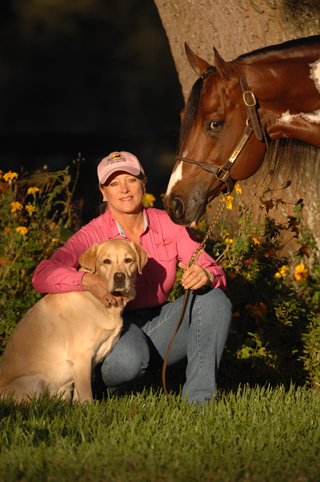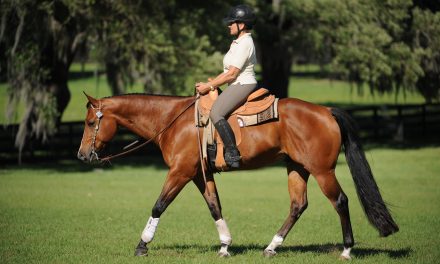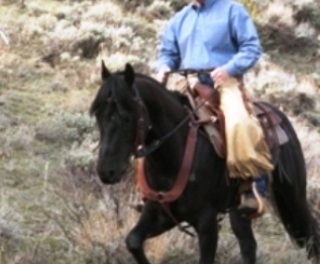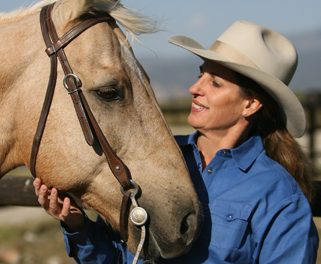Palm Partnership Training
GET RESULTS YOU CAN USE
 Have you ever ridden a horse on a curve or a circle and felt the horse speed up, lose his balance and not be able to follow the path of the curve or the circle? You may have been asking your horse to trot in a curved arc over logs in a trail class, lope a circle in a horsemanship pattern or ride a turn on a hunter course. If you’ve had this experience chances are your horse was making every effort to do what you asked, however he may not have been asked to maintain a proper bend to allow him to be balanced and keep a steady tempo to his gait on the curve or circle. This week’s “How to Put Your Horse in Balance Through Proper Bending” PPT Training Tips will describe what a proper bend looks like and the aids sequence to ask your horse to bend properly. Look forward to many successes with your horses once you’ve mastered how to communicate to bend properly!
Have you ever ridden a horse on a curve or a circle and felt the horse speed up, lose his balance and not be able to follow the path of the curve or the circle? You may have been asking your horse to trot in a curved arc over logs in a trail class, lope a circle in a horsemanship pattern or ride a turn on a hunter course. If you’ve had this experience chances are your horse was making every effort to do what you asked, however he may not have been asked to maintain a proper bend to allow him to be balanced and keep a steady tempo to his gait on the curve or circle. This week’s “How to Put Your Horse in Balance Through Proper Bending” PPT Training Tips will describe what a proper bend looks like and the aids sequence to ask your horse to bend properly. Look forward to many successes with your horses once you’ve mastered how to communicate to bend properly!
The Bend
What does a horse look like when he has a proper bend in his body?
If you look at the horse from an “overhead view” – that is if you were viewing the horse directly above him, you would see that from his poll to the top of his tail there would be a slight arc to his body. If you were riding your horse to the right you would see the horse’s head and neck slightly bent to the right. When you’re riding the horse you’ll just be able to see the corner of the horse’s right eye when traveling right. The horse’s spine will be slightly arced, and the horse will be bent around your right leg, and supported with your outside aids.
Please note that many riders think correct bending of the horse is just bending the head and neck. When you only ask the horse to bend his head and neck you only bend the head and neck and not the rest of the horse’s body. This can hurt a horse; and when done extensively, can build a horse with a rubber neck (too flexible) that will always lose his balance.
Bending a horse properly is bending the horse through his entire body from his poll (top of the head) to his dock (top of the tail).
What is the Relationship between Bending and Balance?
When the horse is balanced, he will have a proper bend to his body as we discussed above. When a horse is not properly bent on a curve he will be unbalanced and increase or decrease speed which in turn may cause you to lose your balance. When the horse is properly bent, you’ll find it easy to steer or guide your horse because he is responding to lighter aids, to keep the same speed and to feel the horse move with free-flowing strides.
Remember:
No bend = No balance
Bend = Balance
Bending Aids Sequence
To allow your horse to bend properly on a curve you’ll need to understand and follow a correct aids sequence to get the best responses from your horse.
Both legs and both reins have to act together in order to achieve control of your horse’s body. By practicing the correct aids sequence you’ll be able to automatically adjust your aids to feel what you need to do to keep your horse bent properly.
I’ll describe the bending aids sequence as you’re riding to the right. You’ll first start with the inside right leg aid on a curve. You’ll want to do this at a walk first so you can get the feel of what you’re asking from your horse. Your right leg will be first in the sequence with the activity right behind the girth. The active right leg will ask your horse to compress his body slightly inward so he starts to bend.





